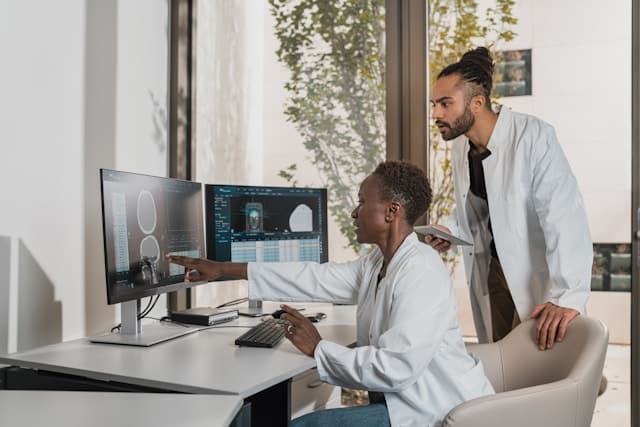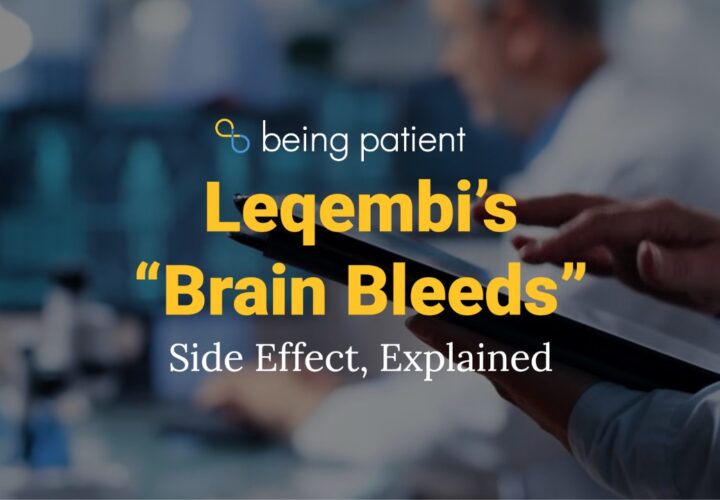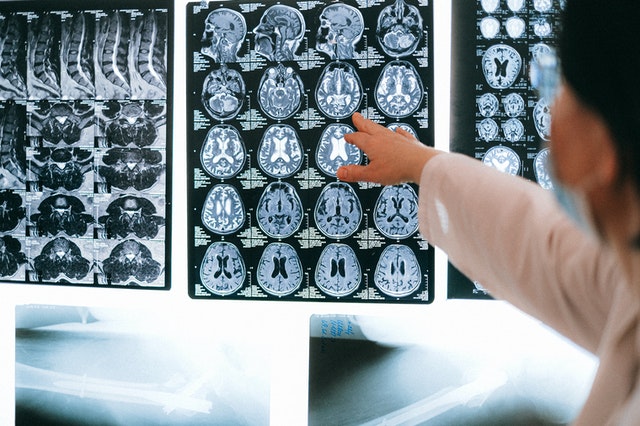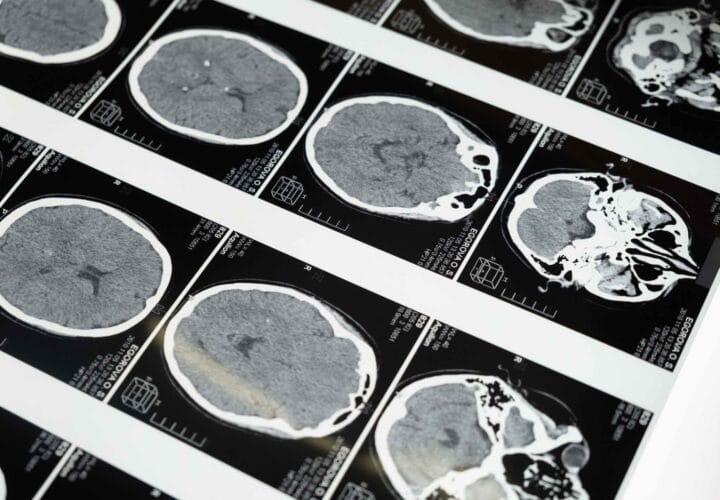Between 13 and 35 percent of people who receive anti-amyloids develop brain swelling or brain bleeding. At the 2025 AD/PD conference in Vienna, researchers gathered to discuss the advances in understanding, monitoring, and preventing ARIA.
Anti-amyloid drugs like Leqembi and Kisunla are among the first FDA-approved treatments for early-stage Alzheimer’s disease. But these breakthroughs come with a tradeoff: Up to one third of people who take them develop amyloid-related imaging abnormalities, or ARIA — a side effect that can range from, most commonly, asymptomatic and harmless to, rarely, life-threatening. Rates of ARIA cases among trial participants differed between the two drugs: Kisunla trial participants had a higher likelihood of ARIA than those on Leqembi.
At the 2025 AD/PD Conference in Vienna, researchers gathered to dig into this side effect: what causes it, how to predict it, and how to manage or prevent it. Their work reflects a growing consensus: In order to use anti-amyloids safely and effectively, the field needs a deeper understanding of ARIA’s biological roots and risk factors.
“There is really a knowledge gap in the understanding of ARIA, but also in their prediction, and detection,” Stefan Teipel, neurologist and professor at DZNE, the German Center for Neurodegenerative Disorders, co-chair of the 2025 AD/PD conference session on ARIA, told Being Patient.
Researchers at the session discussed research in animal models that looks at the biology and treatment of ARIA, as well as predictive biomarkers that could help predict which patients are potentially vulnerable. Since the effects of anti-amyloid drugs are limited, Teipel said, “we would like to know which patient will have a higher risk for ARIA and which patient will have a low risk of ARIA” to counsel individual patients about their potential risk and ultimately help them decide whether to take the drug.
What is ARIA, and how dangerous is it?
ARIA is most likely to occur during the first few infusions of the anti-amyloid drug, and then the chances of these side effects drop off. ARIA encompasses two types of findings that are spotted on brain imaging: ARIA-E, which is more common and involves brain swelling, and ARIA-H, which involves small brain bleeds. In most cases, ARIA doesn’t cause any symptoms and resolves on its own. In one to one-and-half percent of the time, it can be severe and potentially fatal.
ApoE4 homozygotes, who have two copies of the gene, have roughly double the risk of developing ARIA. Other risk factors include cerebral amyloid angiopathy which involves beta-amyloid sticking to the brain’s blood vessels, previous history of brain bleeds, other brain diseases, and uncontrolled blood pressure.
Drug approvals internationally have been hindered because of the occurrence of the rare but fatal complications of ARIA. Leqembi was only approved by European regulators for individuals who aren’t ApoE4 homozygotes, whereas a European advisory committee declined to recommend Kisunla for approval due to these risks across all patients taking these drugs. Similarly, in the UK, Leqembi is not available to ApoE4 homozygotes, while in Australia, the drug was declined for approval altogether.
How is ARIA for patients on mab drugs prevented?
Again, most cases of ARIA don’t result in symptoms — and to ensure this, early detection is essential. So for patients taking mab drugs, MRIs that monitor for signs of ARIA are part of the treatment process.
For patients taking Leqembi recommendations, scans are recommended prior the fifth, seventh, and 14th infusions. For Kisunla, an MRI is taken before the 2nd, 3rd, 4th and 7th infusions for all patients and also before the 12th dose for high-risk patients.
“There is a substantial percentage of patients where the MRI looks fine, but then later it comes out, they had the risk for having ARIAs,” said Teipel.
If ARIA is detected in a patient’s MRI, mab drug treatment is paused so that the swelling or brain bleeds have time to resolve. Teipel explained that catching ARIA and pausing treatment prevents the ARIA from worsening and potentially becoming symptomatic.
New progress on predicting, preventing and treating ARIA
Derrek Hibar, a researcher at Genentech, presented the company’s research into identifying blood-based biomarkers of ARIA-E. Once these biomarkers are validated in other studies, they may be rolled out into the clinic and could help doctors treat their patients safely.
Teipel said the conference sessions also showcased the growing interest in the field in studying the ways that the brain’s immune system causes ARIAs, and how these pathways could be exploited to treat these side effects in the future.
Cynthia Lemere, a neurologist at Brigham and Women’s Hospital, and one of her PhD students, Maria Tzousi Papavergi, presented their research into what happens to the brain’s cells and immune system during ARIA. Donna Wilcock, a professor at Indiana University, and a researcher in her laboratory, Kate Foley, also zeroed in on the way the brain’s immune cells, the microglia, respond to anti-amyloid antibodies. Through animal models, the scientists uncovered signaling pathways that trigger inflammation and ARIA.
The hope is that researchers can develop drugs that could stop ARIA in its tracks, but it is still a little while away from human trials.
Some risk factors for ARIA, like cerebral amyloid angiopathy, are hard to detect without brain imaging. Aatmika Barve, a researcher at Lausanne University Hospital in Switzerland, presented her research identifying blood-based biomarkers of the risk factor. Her work pinpointed two biomarkers of brain damage and inflammation, GFAP and NfL, that may predict if a patient has the condition.
But more research is needed before blood tests for these risk factors are rolled into clinical practice. An MRI combined with these biomarkers could make it easier for doctors and patients to understand their risk of developing ARIA.
ARIA, ApoE4, and anti-amyloids
Teipel also presented his work reanalyzing the Leqembi and Kisunla trial data to assess the evidence for its effectiveness across subgroups of participants, like ApoE4 homozygotes and women.
Based on the data collected in the trials, ApoE4 homozygotes likely did not benefit from Leqembi or Kisunla. In women, it appeared that Leqembi was less effective than in men. However, Teipel cautioned that the analysis does not provide clues as to why.
One potential idea: ApoE4 homozygotes are more likely to develop ARIA and, as a result, stop treatment until it subsides, meaning they get less exposure to the treatment. The analysis would support and complement the decision of regulators in the UK and the EU to restrict these drugs to people who aren’t homozygotes.
If Teipel was practicing in the US, where ApoE4 homozygotes are eligible for treatment, what would he tell potential patients?
“I would recommend them not to start off treatment, because I would expect that they have little benefit at relatively high risk,” he said, adding that he would try to find them a clinical trial that they could enroll in and potentially receive a greater clinical benefit.
He admits he’s relatively conservative when it comes to treating patients with these drugs, however, and would let his patients know this when he provides them advice so that they can understand where he’s coming from.
UPDATED: May 7, 2025 11:55AM EST: Corrected to reflect that brain scans for Leqembi are recommended prior to the fifth, seventh, and 14th infusion, not after.
EDITOR’S NOTE: This article was updated on May 14, 2025 9:04AM EST to clarify the risk of ARIA in Kisunla and Leqembi.




